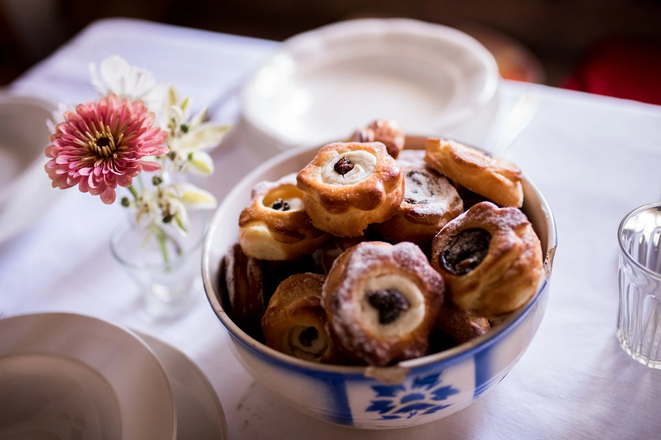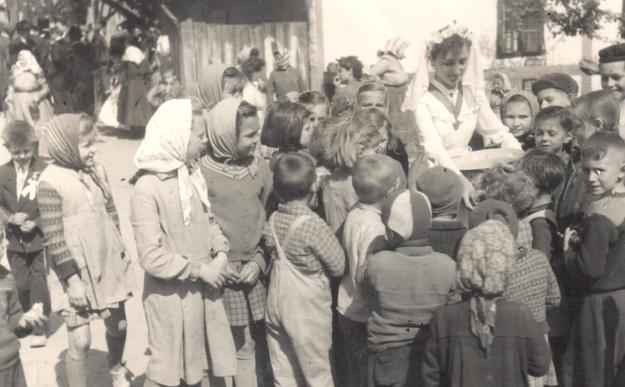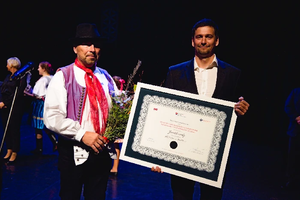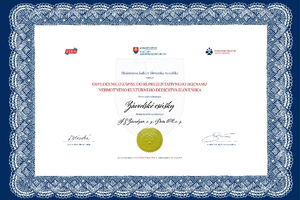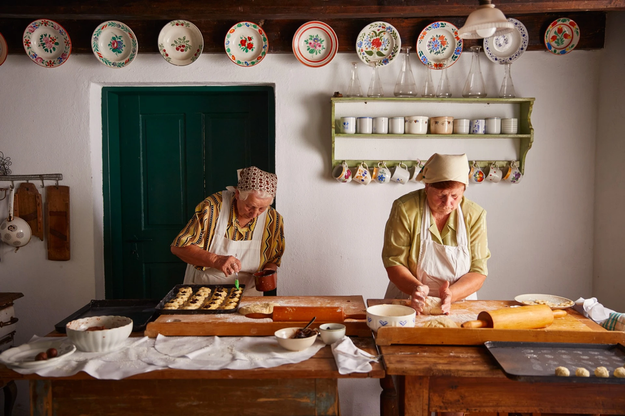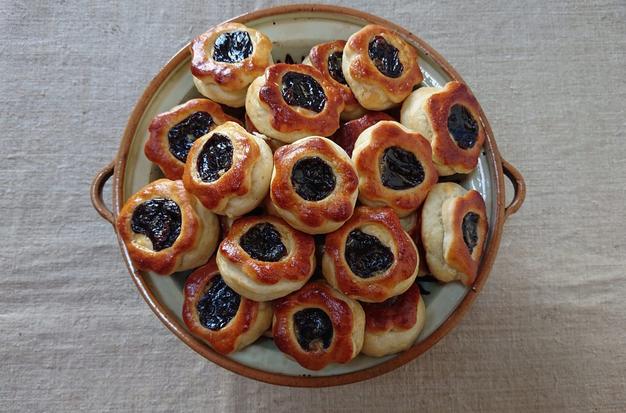The scent of freshly baked pastries – warm and flaky, filled with sweet jam, creamy cottage cheese, or a hint of cinnamon – instantly evokes the comforts of home. It is the aroma of generations past, of grandmothers who fill kitchens and hearts alike with treats made to be shared.
Sisters Helena Matkovičová and Anna Eglová did not think that one day their pastries, known as Závodské osúšky, would be added to UNESCO’s list of intangible cultural heritage. Puff-pastry buns in the shape of stars with various sweet fillings are a traditional treat at weddings in the village of Závod, in the Záhorie region of western Slovakia.
The bakers of osúšky, Matkovičová and Eglová, who are both pensioners, had traditional Závod pastry at their own weddings. However, they revealed to The Slovak Spectator that nowadays osúšky are baked for almost any celebration, whether it is a birthday, a name day, or simply as a treat for the family. "Now we bake them quite often, but in the past, they were purely wedding pastry," Eglová explains.
However, the sisters have never baked osúšky for profit; it’s a hobby they’ve embraced, one they love and are happy to spend time on. Yet they have never turned anyone down: "When someone from the family came by, like my cousin, and she was having a wedding or christening and asked if we could bake them, of course we’d bake them – why not?" Eglová says, adding that more people started joining in over time.
It’s in their family: the recipe for the traditional osúšky was passed down to them from their mother, as well as from other aunts in the village. The sisters then worked together on refining the recipe.
"In our childhood, times were different, and education wasn’t accessible to everyone," recalls Eglová, so together with her sister, they found their passion in baking. “Our mother was skilled in both cooking and baking, and she pushed us in that direction,” shares Matkovičová, adding that whenever their mother had to go out, she would assign them tasks to prepare meals. When the sisters would push back, she would say, “Whatever you make, that’s what we’ll eat,” and they learned, Matkovičová recalls.
“When osúšky were baking, I would help out; if our mother couldn’t be there, she would send me,” Eglová recalls of her experience learning to bake. When their mother went to knead dough, they’d suddenly hear their father calling, “Come here, wash your hands, roll up your sleeves, and start kneading. If you don’t know how, you’ll learn.” And gradually, they did learn.
Slovakia’s intangible cultural heritage is recognised by UNESCO
“The UNESCO list is updated every year, and anyone can apply to have a traditional element of folk culture included,” explains Alexander Krajčír, owner of Dom 1890. Dom 1890, with the year in its name reflecting its origins, is a civic association founded in Závod by Krajčír and his family. Krajčír’s great-grandmother once lived in the eponymous house, and his family has restored it as authentically as possible, preserving its original appearance to maintain its historical authenticity.
It was Dom 1890 and the Závodzan Folklore Ensemble who submitted the application to have Závodské osúšky listed by UNESCO. “We developed the project, and UNESCO reviewed it for half a year, or even a full year. It took quite a while because there are many applicants. This year four were selected, and we were among them,” Krajčír says, describing the application process.
The Matkovičová-Eglová sisters then filmed a video of themselves preparing Závodské osúšky, baking the traditional pastries using five kilograms of ingredients.
The osúšky recipe is quite old; according to oral tradition, the pastries appeared on wedding tables as early as the 19th century. They were likely inspired by Viennese cuisine, as local housewives from Závod commonly spent time working in Austria.
The sisters, however, are open to sharing their recipes, which is why they have shared the osúšky recipe with readers of The Slovak Spectator, so their craft won’t disappear. They’ve experienced instances where a friend refused to give them a recipe, saying “Art isn’t for sale.” However, the sisters understand that they won’t be around forever, so they are writing history with their now-famous osúšky. In September, Eglová celebrated her 85th birthday – and she still loves baking.
As time flies, the recipe for osúšky improves
Nowadays, Závodské osúšky are baked with a star on top, but originally there was only a small indentation made with a champagne cork, Matkovičová and Eglová explain. "Into the indentation they used to add cottage cheese and a raisin – that was it. That’s how our grandmothers used to bake them with the bakers. But now,” Eglová says, “times have changed."
When the egg yolks were too pale, the sisters noticed another housewife had added a vanilla powder called Zlatý Klas to give the dough a nice, rosy color – though this was not in the original recipe. Oil was also one of the main ingredients in the original recipe, but the sisters discovered that homemade duck, goose or pork fat worked better for osúšky.
So, they began to use fat and butter instead of plain cooking oil. Another secret to making the best osúšky is to knead the dough to just the right consistency – not too soft, not too firm – so the sisters knead it by hand.
For weddings, the sisters would knead the dough in a large trough, bigger than a kitchen table, working with 15 to 20 kilograms until it was perfectly smooth. While the sisters were kneading, another person would manage the oven. “We’d ask, ‘Who’s on oven duty?’ and someone would quickly volunteer, ‘I am! All right, you’re in charge,’” they recall with a smile. There were usually five to seven people, and they worked for half a day.
“We also must keep an eye on the oven, though – sometimes we forget, and they come out a bit darker. But don’t worry, they’ll still get eaten,” they laugh. “We say: ‘If you eat the burnt ones, you’ll be beautiful.’”
Young people today are also interested in having this tradition at their weddings. Two years ago, the sisters baked osúšky for a wedding in the nearby town of Malacky. “The other pastries they ordered elsewhere were left over, but our osúšky were all gone,” they recall with a smile.
Dough:
1kg of semi-coarse flour (can be half, mixed with smooth flour)
300g of butter
2 egg yolks
1 serving of Zlatý Klas vanilla pudding powder (optional)
2 packets of vanilla sugar
60g of yeast
1 litre of milk
300g of granulated sugar
Salt
A small amount of lemon peel
Fillings:
Jam filling:
2 tablespoons of plum jam
Cottage cheese filling:
1/2 kg of cottage cheese (lumpy variety)
A pinch of salt
Granulated sugar to taste
1 egg
Lemon zest
Vanilla
1/4 stick of butter
Raisins
Cinnamon filling:
Hera margarine
Cinnamon
Cocoa powder
Powdered sugar
Vanilla
Coarse flour
Zlatý Klas pudding powder
All ingredients to taste and as needed.


